Traditional Eccles Cakes
This post may contain affiliate links. See my disclosure policy.
One of Britain’s most famous and beloved pastries, these traditional Eccles cakes are delightfully flaky and packed with a mixture of sweet currants, candied citrus peel and spices. Get ready to experience one of the most delicious pastries you’ve ever tasted! A thoroughly authentic Eccles Cakes recipe.
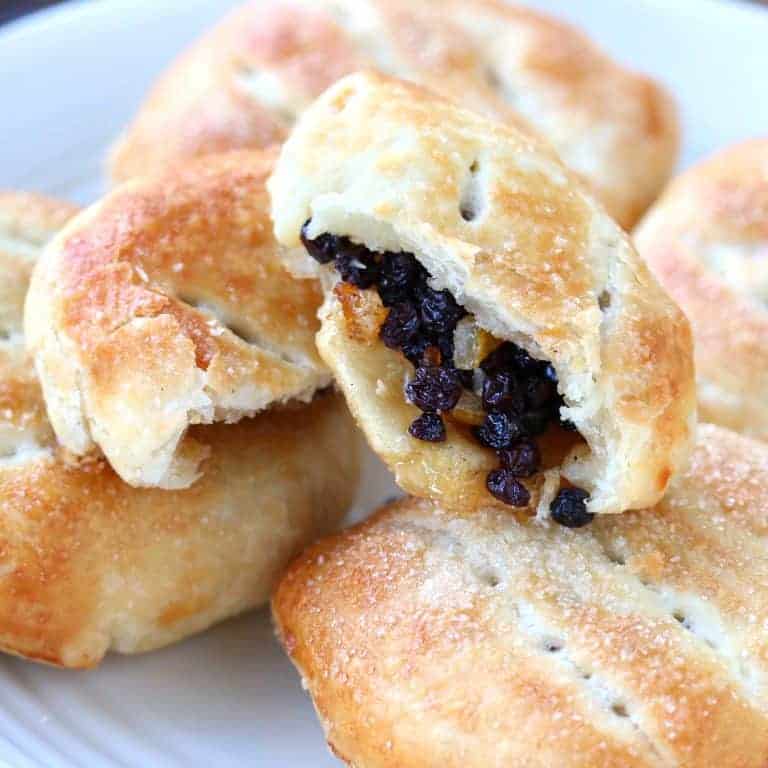
The Eccles Cake is practically a British institution. And one of its tastiest at that. And while sadly far too many of Britain’s other centuries-old recipes have been long lost and forgotten, the Eccles Cake, most fortunately, has continued on. These delicious pastries really take me back to the years I lived in England. Though at the time I had only had the store-bought versions, they nevertheless made a lasting impression. Now every time I enjoy one of these exquisite homemade Eccles cakes I’m immediately transported back to the country I call my second home.
What Are Eccles Cakes?
If you’ve never heard of them, Eccles Cakes are small, round cakes made from flaky pastry that is filled with dried currants, candied lemon, orange zest, sugar and spices that commonly include cinnamon, nutmeg, allspice and cloves. The cakes are topped with a sprinkling of sugar and then baked to flaky, golden perfection. They’re traditionally enjoyed with a cup of tea and accompanied by Lancashire cheese for a sweet-savory combination. Similar to Eccles cakes are two other traditional British pastries: Banbury cakes (oval-shaped) and Chorley cakes (flatter and using shortcrust pastry).
Where Did They Originate?
Eccles cakes date back to at least 17th century England. A popular pastry even then, they eventually fell under the stern and disapproving glare of the Puritans. Inappropriately indulgent, sinfully tempting to the human soul, and inciting revelry at community events known as Eccles Wakes, the Puritans banned both Eccles cakes and mince pies (also containing currants). As legend goes, Oliver Cromwell himself made a public example of the deviant pastries by instating an act of Parliament that threatened imprisonment for anyone found eating an Eccles cake.
Had he eaten them occasionally he probably would have been a far happier, and undoubtedly more congenial, man. As it was, he died just a few short years later from a urinary infection. (Serves you right, ye olde git, for taking away our Eccles cakes!)

Fortunately Cromwell’s Puritan reign of culinary terror ended and the Restoration saw the triumphant return of the Eccles cake. (Though they remain something of a societal menace with an increase in house fires attributed to them. A British newspaper reported that these fires are due to microwaving Eccles cakes too long – the sugar on the outside bursts into flames if overheated. So just be careful when you reheat them – we don’t want another ban placed on them!)
Eccles cakes are named for the town of Eccles in Lancashire, England, now classified as a town in the City of Salford, Greater Manchester.
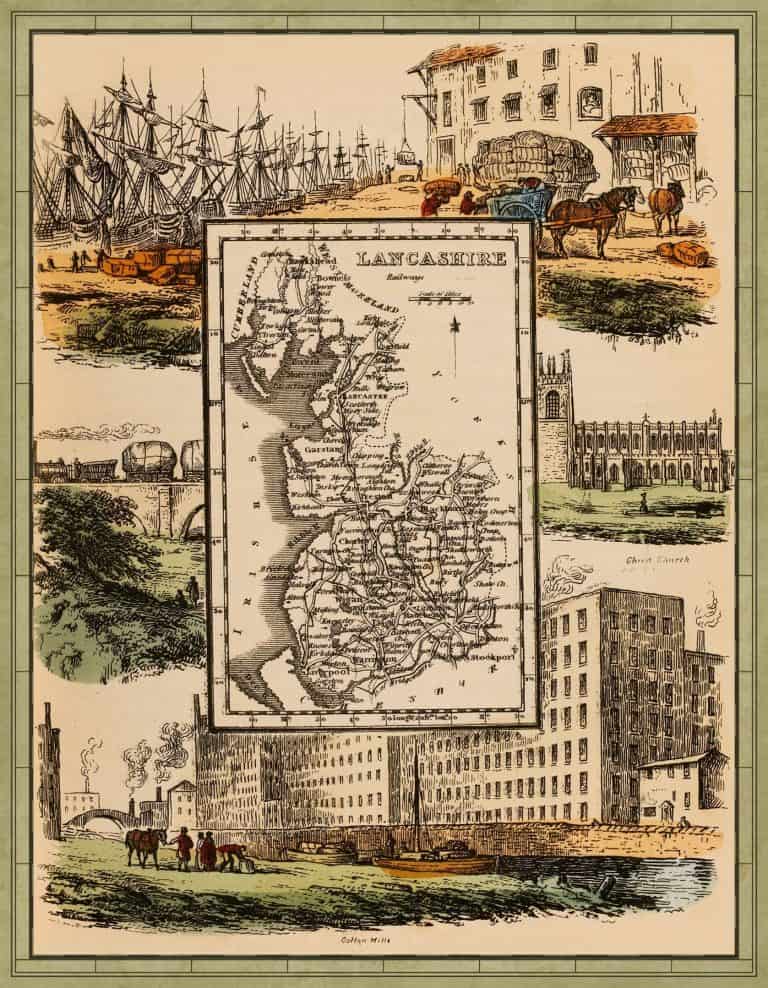
Though their origin long predates him, it was James Birch who became the first person to sell Eccles cakes commercially in 1793 in the Eccles town centre. Their popularity continued to grow and they were even being exported to the West Indies and to the United States as early as 1818.

Eccles cakes continue to be produced commercially and sold worldwide. The factory that makes Real Lancashire Eccles Cakes is located just 5 miles down the road from the pastry’s birthplace and, 75 years later, it’s the world’s largest producer of Eccles cakes.
These store-bought cakes are one of the few rare exceptions of pre-packaged, commercially sold pastries that actually taste pretty darn good. That’s because while they’re mass-produced, they’re largely handmade.
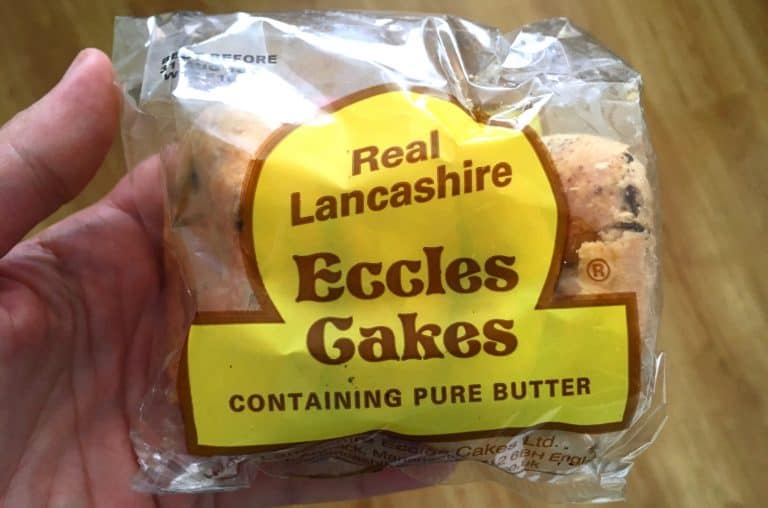
Homemade Eccles Cakes
But as enjoyable as these store-bought Real Lancashire Eccles cakes are, nothing – and I mean nothing – beats the flavor and texture of homemade Eccles cakes.
If you’ve tried but have never cared for Eccles cakes, you must try these homemade ones. You’ll likely change your mind. And if you’ve always loved Eccles cakes, after trying these I’m confident you’ll love them even more.
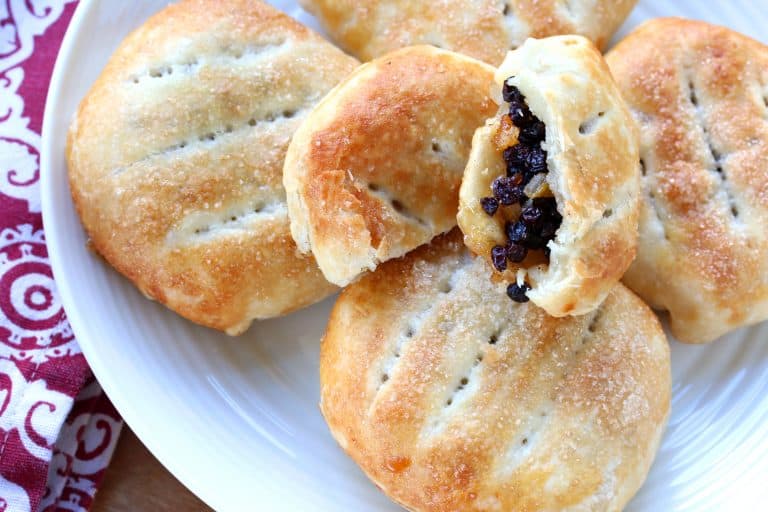
How to Make Eccles Cakes
The quality of the pastry is absolutely key. It’s not puff pastry, but it is flaky pastry. The texture is somewhere in between puff and shortcrust pastry. The dough of the Eccles cake is delightfully flaky, and if you want it especially delicate and flaky, substitute a little lard for some of the butter (see my tutorial on How to Make Lard).
The other key to a great Eccles cake is using a generous amount of filling. When you bite into an eccles cake you shouldn’t get a mouthful of dough. The ratio should be roughly 60% pastry and 40% filling. When you bite into an eccles cake you should simultaneously experience the gentle crackle of the flaky pastry along with the soft and sweet chewiness of the currants. Currants are also known as “zante raisins” which are much smaller than regular raisins. Regular raisins are extremely (too much so) sweet and squishy while zante raisins are a bit tangier, chewier and firmer and won’t become mushy-wet like raisins.
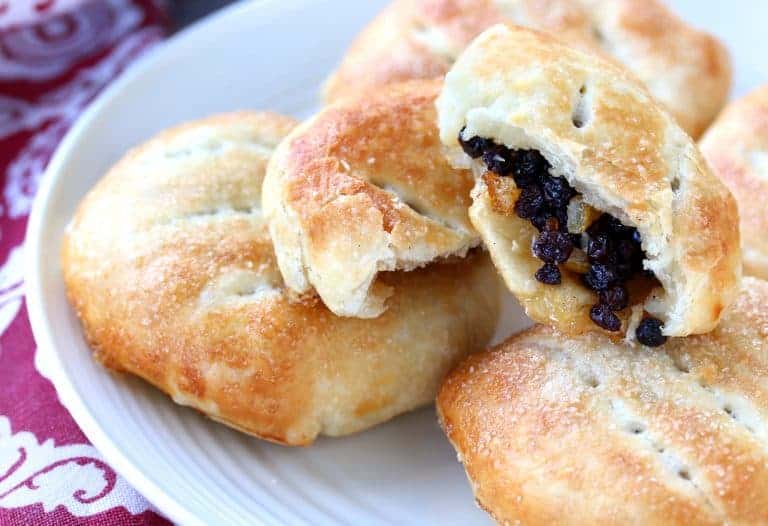
Eccles Cakes Recipe
Let’s get started!
NOTE: To save time both the pastry dough and the filling can be made days in advance and kept chilled.
Make the pastry dough:
To make the pastry dough: Place the flour, salt and cubed butter in a food processor (alternatively this can be done by hand) and pulse until the mixture resembles coarse breadcrumbs.
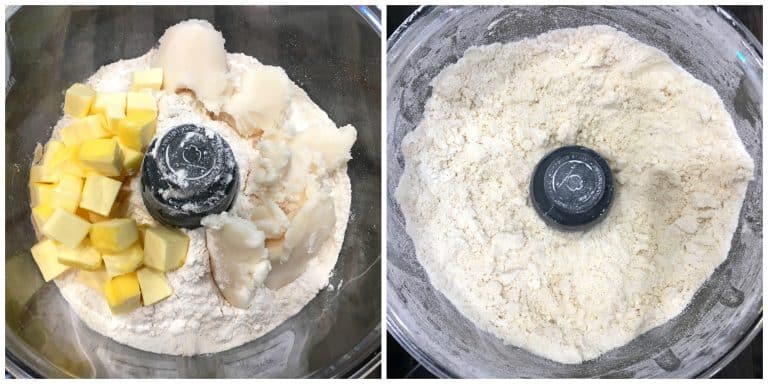
Gradually add the ice cold water and pulse just until the dough comes together (only add as much water as needed). Do not overdo this as maintaining the flecks of butter is critical to achieving a flaky pastry.
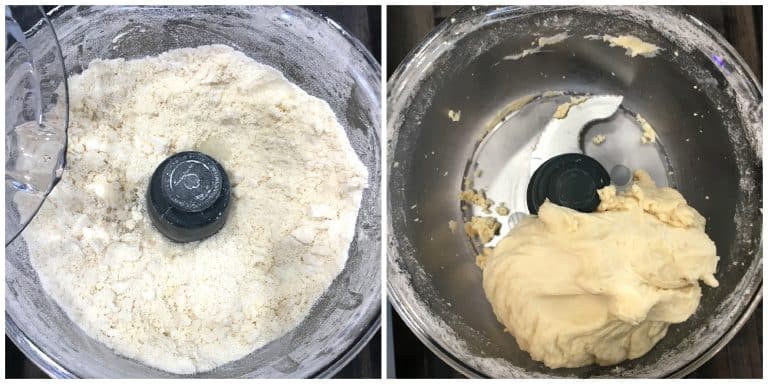
Turn the dough out onto a floured work surface and roll it out into a rectangle about 1/2 inch or so thick.
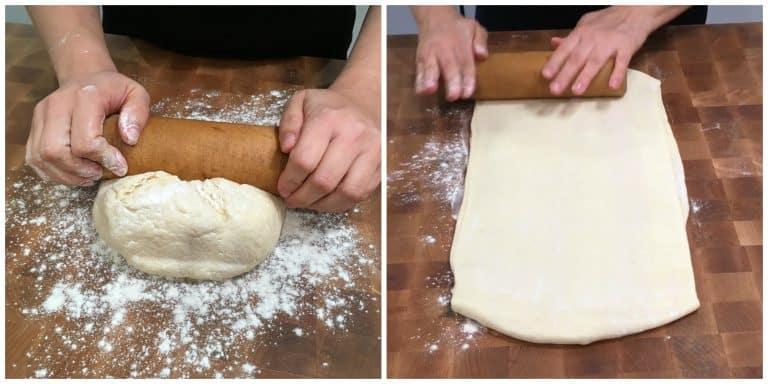
Fold each end of the dough into the middle with one end overlapping the other.
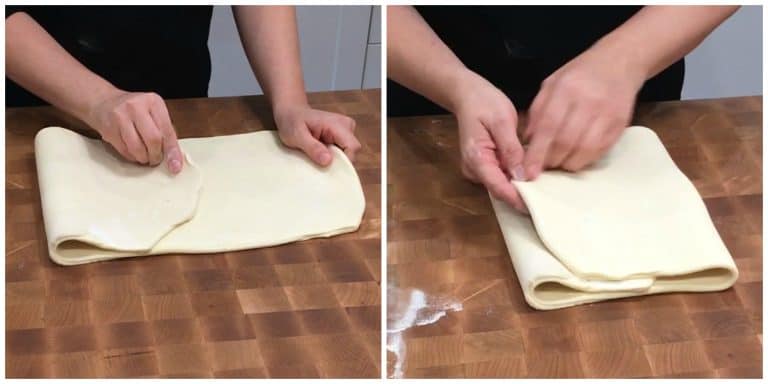
Rotate the dough 90 degrees and repeat all the steps. Wrap the dough in plastic wrap and chill for 20 minutes. Repeat the steps again, wrap the dough and chill for at least one hour before using. Can be made several days in advance.
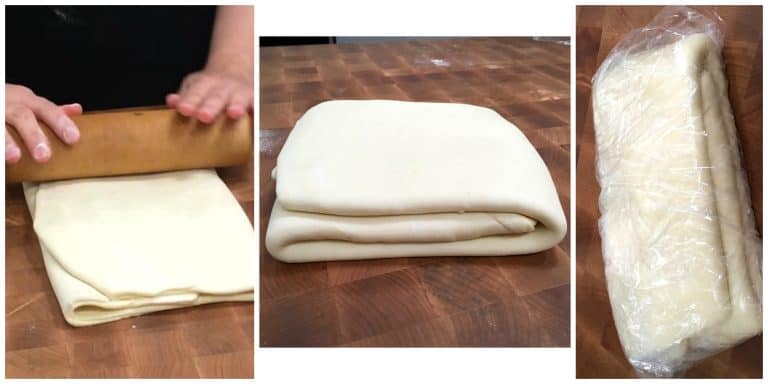
Make the Filling:
Melt the butter in a medium saucepan and add all remaining ingredients except for the egg white and demerara sugar. Turn off the heat and stir in the rum. Let the filling sit for at least 3-4 hours before using or overnight.
The filling can be made a few days in advance. If refrigerated, let the filling sit at room temp for at least 30 minutes before filling the Eccles cakes.
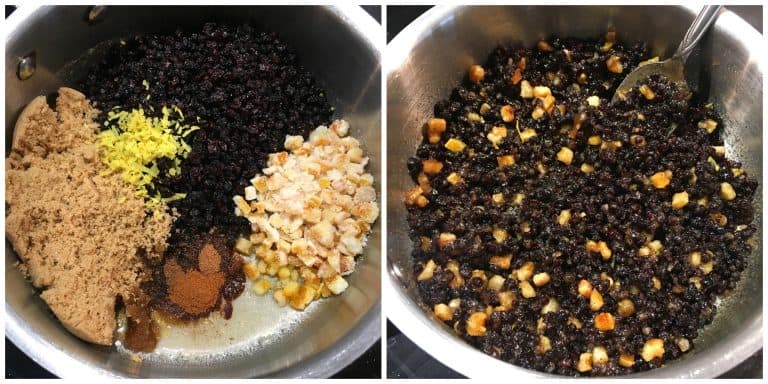
Assemble the Eccles Cakes:
I’m presenting two ways to cut out and fold the pastry: Round and square. Round is most commonly how it’s done but I personally prefer the square route. Even though some of the cakes may not turn out as perfectly round (because you’re having to tuck under the edges and shape the cakes round), I prefer square for two reasons: 1) You can fully customize the size (you’re not limited to the particular size of your round cutter) and 2) you use up all the dough this way, there’s no waste. Use whichever method you prefer.
Two Ways: Round or Square
Flour a work surface and roll the pastry out to between 1/8 and 1/4 inch thickness. Per your preference, either cut out rounds or squares. Typical size is about 3.5 inches across. This will yield about 10 Eccles cakes.
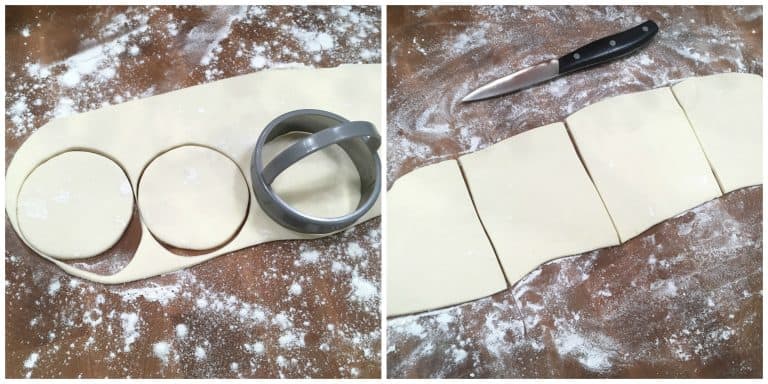
Two Ways: Round or Square
Place the dough cutouts on a lined baking sheet. Place as much filling on the cutouts as you can while leaving an adequate edge all around them to properly seal the pastries.

Two Ways: Round or Square
Lightly brush the edges with water.
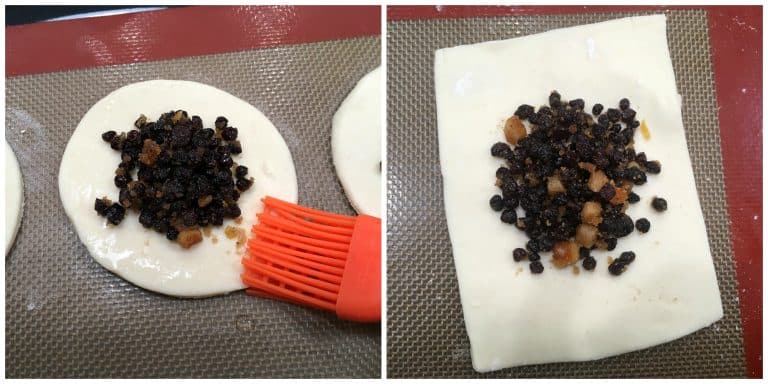
Going Round:
Gather up the edges towards the center, pressing them gently together to seal.
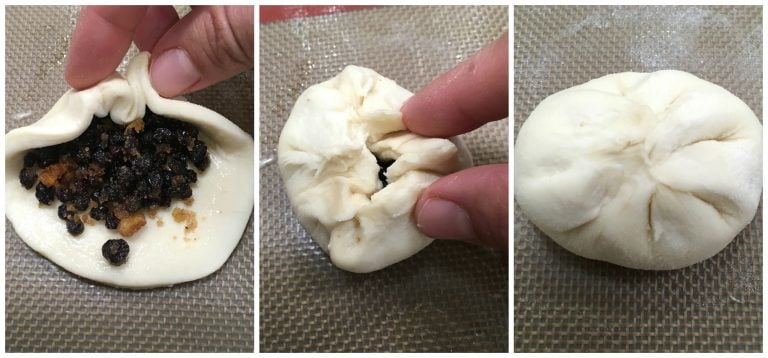
Going Square:
Fold each corner in towards the center and then gently press the edges to seal them. Bend the bend the corners in towards the center to create a round shape. Turn the pastry over with the sealed edges on the bottom and further shape it into a round.
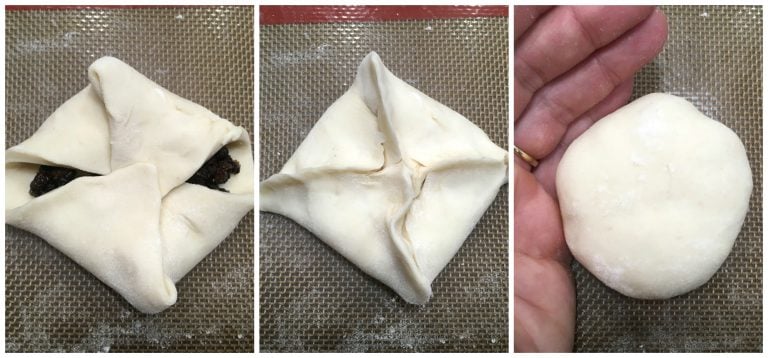
With the sealed edges on the bottom and the smooth surface on the top, gently press the cakes to slightly flatten them. Don’t press so hard that the currants break through the dough. Use a sharp knife to cut three parallel slits in the dough.
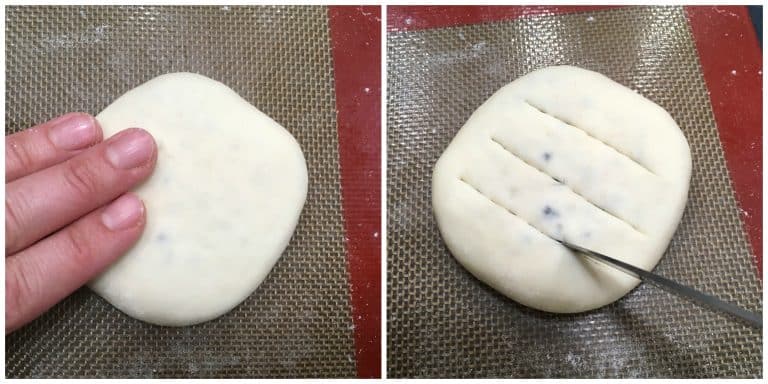
Brush with egg white and sprinkle with demerara sugar (can substitute cane sugar, or regular granulated sugar)
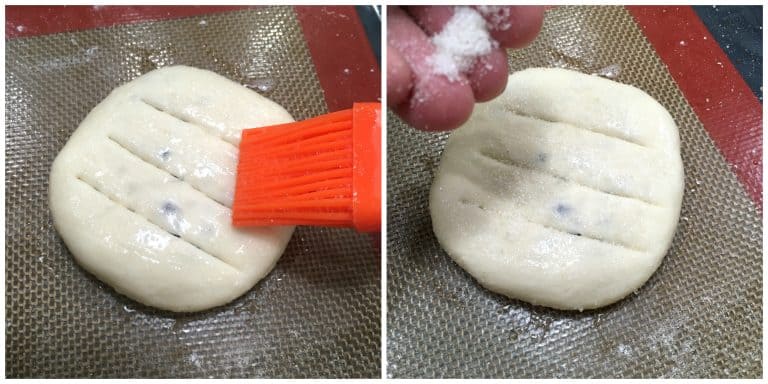
Bake the Eccles Cakes:
In an oven preheated to 375 degrees F, bake the Eccles cakes for 15-20 minutes or until golden brown. Transfer to a wire rack to cool until just warm.
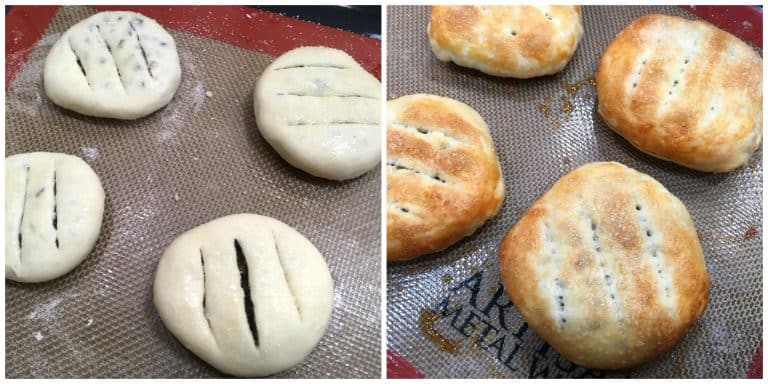
Eccles cakes are best eaten a little warm. You can reheat them in the microwave.
Traditionally enjoyed with a cup of tea and accompanied by an aged, crumbly cheese (e.g., Lancashire, English cheddar) for a sweet-savory combination.
Enjoy!

For more delicious British & Irish treats try my:
- Treacle Tart
- Spotted Dick
- Sticky Toffee Pudding
- Lardy Cake
- Hot Cross Buns
- Crumpets
- Welsh Cakes
- Chelsea Buns
- Parkin
- Scottish Shortbread
- Bara Brith
- Barmbrack
- Mincemeat
- Mince Pies
- Victoria Sponge Cake
Save This Recipe
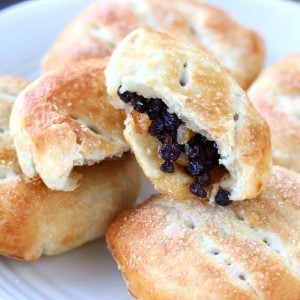
Traditional Eccles Cakes
Ingredients
- For the Pastry:
- 3 1/3 cups all-purpose flour
- 11 ounces (2 3/4 sticks) very cold butter, diced into cubes (put in the freezer for 5-10 minutes after cubing it to ensure it’s very cold)
- 1/2 teaspoon salt
- 125 ml ice cold water (add more if needed)
- How To Render Lard (click link for recipe) (for extra flaky pastries you can substitute a little lard in place of some of the butter)
- For the Filling:
- 6 tablespoons butter, unsalted
- 1 1/2 cups dried currants (also known as zante currants)
- 1/3 cup candied orange peel , very finely diced
- 1/3 cup candied lemon peel , very finely diced
- Homemade Candied Citrus Peel (click link for recipe) (We VERY STRONGLY recommend using homemade, it makes ALL the difference!)
- 3/4 cup brown sugar , loosely packed
- 1/2 teaspoon ground nutmeg
- 1/2 teaspoon ground cinnamon
- 1/4 teaspoon ground allspice
- 1/4 teaspoon salt
- 1 tablespoon dark rum (not extract)
- For Topping:
- 1 large egg white
- demerara sugar, for sprinkling (can substitute cane sugar)
Instructions
- To make the pastry dough: Place the flour, salt and cubed butter in a food processor (alternatively this can be done by hand) and pulse until the mixture resembles coarse breadcrumbs. Gradually add the ice cold water and pulse just until the dough comes together (only add as much water as needed). Do not overdo this as maintaining the flecks of butter is critical to achieving a flaky pastry.
- Turn the dough out onto a floured work surface and roll it out into a rectangle about 1/2 inch thick. Fold each end of the dough into the middle with one end overlapping the other. Rotate the dough 90 degrees. Repeat all the steps. Wrap the dough in plastic wrap and chill for 20 minutes. Repeat the steps again, wrap the dough and chill for at least one hour before using. The pastry dough can be made a few days in advance or frozen.
- To make the filling: Melt the butter in a medium saucepan and add all remaining ingredients except for the egg white and demerara sugar. Turn off the heat and stir in the rum. Let the filling sit for at least 3-4 hours before using or overnight. The filling can be made a few days in advance. If refrigerated, let the filling sit at room temp for at least 30 minutes before filling the Eccles cakes.
- To assemble the Eccles cakes: Flour a work surface and roll the pastry out to between 1/8 and 1/4 inch thickness. Per your preference, either cut out rounds or squares. Typical size is about 3.5 inches in diameter. *SEE BLOG POST PICTURES for instructions on making the square version of the cutouts (they’re more customizable and don’t waste any dough). Place the dough cutouts on a lined baking sheet. Place as much filling on the cutouts as you can while leaving an adequate edge all around them to properly seal the pastries.Lightly brush the edges with water.Gather up the edges towards the center, pressing them gently together to seal. Turn the cakes over with the sealed edges on the bottom.With the sealed edges on the bottom and the smooth surface on the top, gently press the cakes to slightly flatten them. Don’t press so hard that the currants break through the dough. Use a sharp knife to cut three parallel slits in the dough.Brush with egg white and sprinkle with demerara sugar (can substitute cane sugar)
- Preheat the oven to 375 degrees F. Bake the Eccles cakes for 15-20 minutes or until golden brown. Transfer to a wire rack to cool until just warm.Eccles cakes are best eaten a little warm. You can reheat them in the microwave.Traditionally enjoyed with a cup of tea and accompanied by an aged, crumbly cheese (e.g., Lancashire, English cheddar) for a sweet-savory combination.
Notes
Nutrition
Originally published on The Daring Gourmet December 8, 2018
Eccles Town Hall image courtesy D.A. Howcroft via CC 3.0 licensing, image altered from original



















Have been wanting to try these but am wondering about the rum in the filling. Granted it’s a small amount, but I don’t consume any alcohol for religious reasons. Can I use another substitute for flavor or does it need to be the real deal for another reason? Thanks! :)
Hi Maddie, no you don’t have to use the rum, it’s just the traditional flavor for eccles cakes. You can simply omit it or use something like orange or apple juice.
Okay perfect, thanks so much – can’t wait to try these!
My journey to Eccles Cakes is complete with this recipe. Now keep in mind I’ve had two stiff gin drinks made with simple citrus syrup from making my own citrus rind as per the encouragement in the recipe. Honestly, it’s worth making the citrus rinds just for the simple syrup. The rinds themselves made beautiful little Christmas gifts in cellophane bags. Anyhow, I digress. I’m not a baker. I cook meat very well, vegetables because I’m supposed to, and bake never. My wife was the baker, but finding myself newly single this Christmas, I had to try something new! I hope she’s managing with cooking meat and having as much fun as I am learning new things. So I made the rinds. And have been drinking too much since then. I made the recipe as described except I soaked the currants in lots of rum. I think that might have been a small mistake because my mixture was maybe wetter? I folded the squares and a lot of stuff leaked out. It made a most delicious burned caramel toffee as I peeled it off the parchment paper. It’s stuck all over my teeth at present. I ignored the part about letting the mixture get to room temp before filling. Might have been a mistake because it took much longer to cook them. But they are amazing! A bit messy for the ones I put the Demerara sugar on. But the ones I put plantation sugar in look neater (but aren’t as tasty).
I said this was a “journey”. I found Eccles cakes as part of a game thwt a colleague and I play when we’re On the road
We call it “international foods cookie roulette”. We go into the international food aisle and try some kind of cookie we’ve never heard of before (we’re in Canada). Sometimes
They’re terrible. Sometimes they’re great. We discovered Eccles Cake last spring and now I can’t find them anymore. So had to make them!
OK, that’s my ramble. I’m going to have one more cake and one more gin and go to bed. Thank you for this recipe! It’s the first on my journey of learning to bake!
Dave, as a non-baker you were brave to tackle these and I commend you for that! And despite some caramelized leaked filling (which hey, turned out delicious in and of itself!) it sounds like your Eccles Cakes were a success, so congratulations on that too!!
Third Christmas making these. I don’t mess with the recipe – it’s perfect (including the homemade citrus rinds and resultant cocktail syrup!). It’s hard for me to resist putting more rum in the currants but as I learned the first year – too wet = too messy. So I put the extra rum in my coffee while I made them today. Cranked Mahalia Jackson Christmas album while I was at it. Took me 50 years to find “my” signature Christmas cookie, but this is it!
Dave, that’s just awesome! What a thoroughly unique signature cookie you’ve chosen and I’ll bet your friends and family love you for it! Thank you so much for the feedback and a very Merry Christmas to you and your family!
I read the Masie Dobbs series and just HAD to make some ecceles cakes.
OH MY GOODNESS, these are amazing!!
Thank you so much, Sarah, I’m thrilled you enjoyed them!
I made these for a friend’s birthday because we share a fondness for reading the Maisie Dobbs books, and it seems Maisie is forever having an Eccles Cake. They turned out well, but for me, it was not an easy task — I think because making the candied citrus peels was a job in itself, so the process seemed to go on for days. Because of recent humidity, the candied peels didn’t really dry, but it turned out not to be a problem in the finished product. I cut the dough in circles, but next time I might try squares because I feel as if I maybe could get more filling in each one. Anyway,they are really rich and delicious, and I’m happy to have found your recipe to make a special treat for a dear friend.
Thank you for the feedback, Anne, and I’m so happy you enjoyed these! Yes, if you’re making everything at once it’s most certainly a lengthy task. I always like to make a large batch of candied peels and freeze them so I can conveniently keep them on hand all year long. It saves a lot of time!
Just bought a pack of 4 “Real Lancashire Eccles Cakes” (as pictured in the article) from an International store here in the US. They are practically tasteless and the ingredients list has no mention of any spices. It advises not to microwave for reheating.
Hi Brian, clearly I’m biased toward homemade which is why I provide a recipe. As I note in my blog post, comparing the store-bought Real Lancashire Eccles cakes to homemade, “nothing – and I mean nothing – beats the flavor and texture of homemade Eccles cakes.” I highly recommend you give making these homemade ones a go. As for mircowaving them briefly to warm them up, there’s no problem doing that with these at all. You don’t have to, but I vastly enjoy them warmed up.
I used candied ginger and added grated lemon and orange peel instead of candied orange and lemon peel. Also didn’t have any rum, so I used brandy instead.
I regular make Eccles Cakes but I am not a great pastry maker.
I use butter puff pastry sheets and never have any problems.
I was born in Eccles and lived there for 35 years before moving down under.
I lived not fat from the original Eccles Cake shop, Bradburns.
I shall send a screen shot by email.
The shop is no longer there but the product is still made not far away.
They are available here in Sydney but I prefer home made.
Thanks for the recipe, I shall work it in with my own.
Hear, hear! Yes, for being mass-produced the Lancashire Eccles Cake factory cakes are actually quite good. I agree whole-heartedly though, nothing compares to homemade. Thanks for sharing, Joseph!
Amazing blog about the foods really writer have chosen the unique content in blog.
If you look at the back of the packet of the Ecccles Cake “Real Lancashire” one ….They are made in Ardwick Manchester…and not Eccles…I love them.
“Zante currants” ARE NOT CURRANTS – They are actually small dried grapes here in the USA! Some sort of disease forbid the importation of REAL CURRANTS. Not sure if this has changed.
What is referred to as “dried currants” in Great Britain aren’t actually currants, they’re raisins. They’re a smaller variety of raisins known as zante raisins. The confusion of the terminology threw me for a loop when I first moved to England, but I eventually figured it out :)
The most scrumptious little cakes I have ever eaten. Prepared the dough and filling the day before and put together the next day. Had trouble with closing the round shape so will try the square one next time. Well worth the trouble to make everything home-made and the filling is nothing like we have ever eaten before. Thank you for such an excellent recipe. DB from Montreal.
Thank you so much, Dana, I’m thrilled that you enjoyed these!
Hello
I was so excited to see this recipe I haven’t had an eckles cake in 30yrs since I left the UK. So I will be making some of these.
I was wondering if you guys had a good “Bakewell Tart” recipe. I have an old one but not happy with the last batch and my old mum (91yo) has dementia and didn’t write any down, they were all stored in her brain that we now can’t access!
Can’t wait to try these out
Hi Tara, I do and it’s on my “to publish” list, so stay tuned :) I hope you enjoy these Eccles Cakes and that they bring back fond memories for you!
I do also add ginger/cardamom/cloves, and quintuplish to taste the cinnamon/nutmeg/allspice.
I’ve made eccles cakes for years…but lost my recipe, and my memory is failing…this recipe is a great replacement!
And I echo your comment re homemade candy peel. Most store bought candy peel is actually made from turnip….and then the flavor is stripped, then sugar and dye added..doesn’t that sound great?? I keep a massive tub of candied fruit in my freezer, keeps forever, and it ends up decorating or in alot of my desserts. lol.
I’m so glad you enjoyed it, Elsie, thank you! The store-bought candied peel….yes, that sounds positively unappetizing!!
Hi Sia, trying these for the first time and I have little pastry experience. In step 2 when you say to repeat all the steps, do you mean to roll it and fold it again or to just fold it again? Thank you!
Hi Terri, you roll out and fold it again. Happy baking!